Recherche
Group members |
Research |
Scientific production |
Awards & distinctions |
News |
Research
|
Development of first-in-class drug candidate against uveal melanoma and associate complications The targeting of the ELR+CXCL-CXCR axis via novel small molecules inhibiting CXCR2 receptors tackles several major players in tumor development and aggressiveness such as angiogenesis, chronic immunosuppressive inflammation and proliferation of tumor cells. Following translational research approach, relying on different techniques such as in silico drug design, molecular modeling, synthetic chemistry, SAR, hit-to-lead optimization, ADMET profiling, several classes of compounds were developed, sorted, optimized and evaluated against aggressive neoplastic diseases characterized by immunosuppressive inflammation and hypervascularization. Proofs-of-concept in multiple in vitro and in vivo oncologic models have been studied and validated. The focus has been given to kidney cancer, head/neck cancers and uveal melanoma, that are highly vascularized and inflamed tumors. Other ocular diseases that possess the same characteristics such neovascular glaucoma, diabetic retinopathy and Age-related Macular Degeneration are also investigated. Driven by very promising results, ROCA was created in 2021 and aims to pursue 2 first-in-class drug development programs: RCT001 with an orally-available small molecule directed towards metastatic uveal melanoma and RCT002 targeting ocular pathogenic angiogenesis by topical administration.
 |
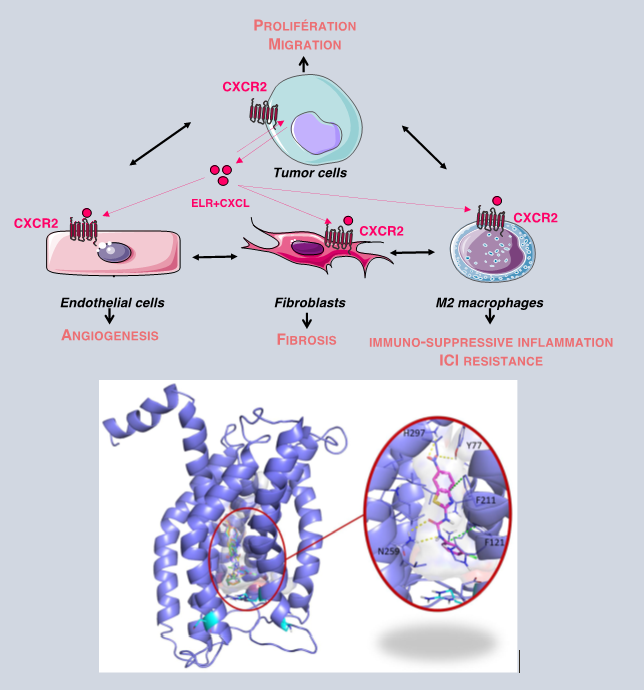 |
|
Development of nik inhibitors for a new potentiation of anti-pd1 treatment Immunotherapy, a treatment that attacked cancer through our own immune system, is one of the major breakthroughs in recent years. Unfortunately, a part of patients did not show any response. The missing immune system activation around the tumor could be one of the reasons for the patient lack of response. Enhancer of Zeste homologue 2 (EZH2) has been proven to play an instrumental role in several cancers. It disables some immune system factors such as IFNγ. It has been demonstrated that the inhibition of the non-canonical NF-kB pathway by targeting NIK restores the immune system through the decrease of EZH2. This resulted also by an antiproliferative activity by the induction of the senescence of the cancer cells. This effect combined with already existing immunotherapy treatments could have a synergistic effect. Recently, we have developed a NIK inhibitor that shows an antiproliferative activity and an induction of senescence. Now, we aim to develop the next generations of NIK inhibitors around this first hit identified.
 |
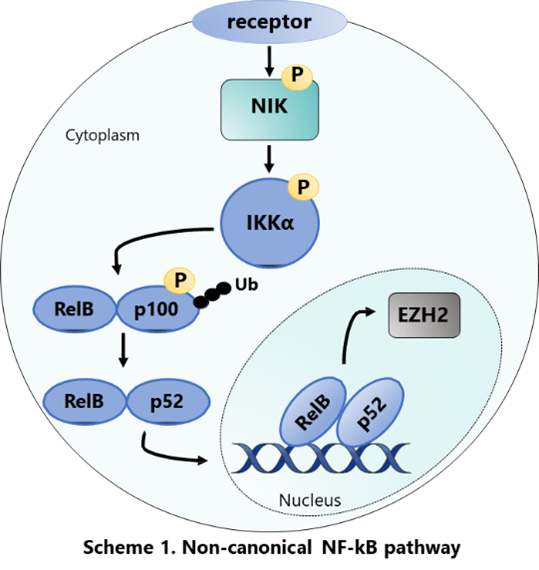 |
|
Development of new chemical tools for the study and characterization of senescence phenomena The progressive aging due to life expectancy increase globally has unveiled new public health issues by placing age-related chronic diseases as one of the top priorities in governmental and pharma policies. One major cause of cellular aging is cellular senescence triggering chronic proinflammatory response and tissue dysfunction, and leading to several chronic inflammatory diseases.
|
 |
|
Development of GRP78 ligands as first-in-class drug candidates in oncology Resistance to standard chemotherapeutic treatments and poor responses to immune-based therapies represent major challenges in cancer treatment as many patients respond poorly or not at all to currently available treatment options. We have identified and validated the key UPR regulator and chaperone Bip/GRP78 as biological target to circumvent resistance mechanisms in cancers. 10-years drug discovery efforts have allowed the identification and development of series of molecules specifically binding to Bip/GRP78 and targeting the global metabolism of cancer cells by modulating the Endoplasmic Reticulum Stress. The First-In-Class small molecules developed selectively activate cell death in cancer cells and increase recognition by the immune system in treatment-resistant as well as sensitive cancers. The high efficacy of the lead compound in multiple xenograft and immunocompetent rodent models, along with with a broad therapeutic window of 8.5 prompted us towards the development of a preclinical candidate. Current efforts are dedicated to pharmacology, target engagement and CMC studies in view of regulatory toxicological studies.  |
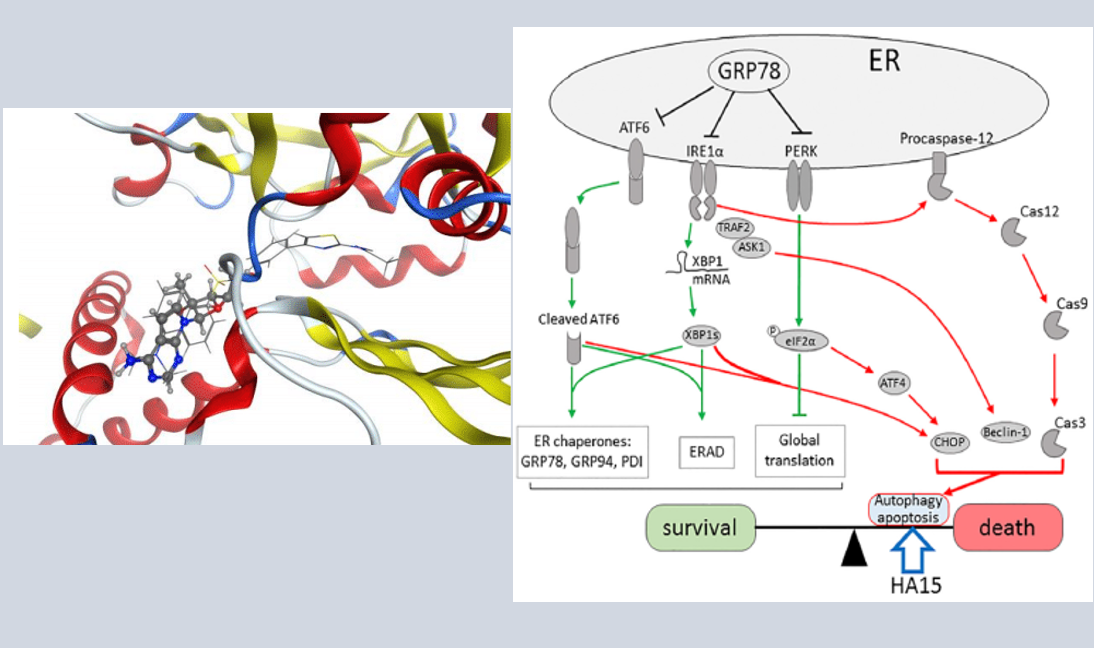 |
|
Arylbiamidine compounds as potential antimelanoma drugs Polynitrogen biguanide-derived molecules such as biamidines, biguanides, sulfoguanidines, amidinoureas or triazines are studied to discover novel pharmacophores in oncology, inflammatory and infectious diseases. Several new families of compounds have been discovered and studied, unveiling unexpected reactivity with the identification of surprising rearrangements, peculiar physicochemical properties beneficial for a drug, and promising activities in a panel of in vitro and in vivo assays to counter drug resistance in cancer cells and pathogens. Applications for several scaffolds are foreseen in drug development. |
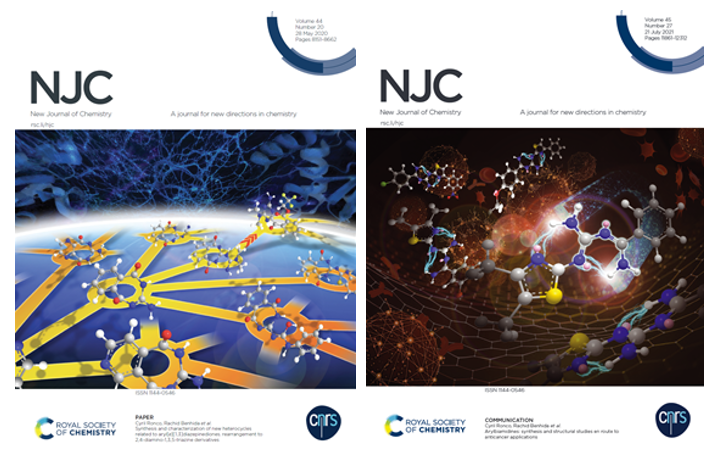 |
|
Synthesis of fine phosphorus chemicals from wet process phosphate The current industrial practice for the production of most phosphorus-containing fine chemicals is the energy-intensive reduction of phosphate to white phosphorus (thermal process), followed by oxidation with environmentally hazardous chlorine to obtain phosphorus trichloride. However, the production of phosphoric acid far exceeds that of white phosphorus, since it represents 95% of the phosphate rock extracted each year. A superior approach to producing phosphorus-containing fine chemicals would therefore be to extract them directly from wet-processed phosphoric acid, which would significantly reduce energy consumption, waste and environmental risks. Very recently, Dr. Rachid Benhida's team (ICN) and Pr. Cummins’s team (MIT) have developed an original cascade of transformations, and for the first time, directly from phosphoric acid. This revolutionary process allows the direct preparation of high value-added organophosphorus derivatives, in a green and sustainable way and with an atomic economy of 100%. This process, based on a divergent approach, allows easy access to a variety of phosphorus-based molecules, thus developing the potential of phosphoric acid valorization in the fine chemistry and pharmaceutical industries.
  |
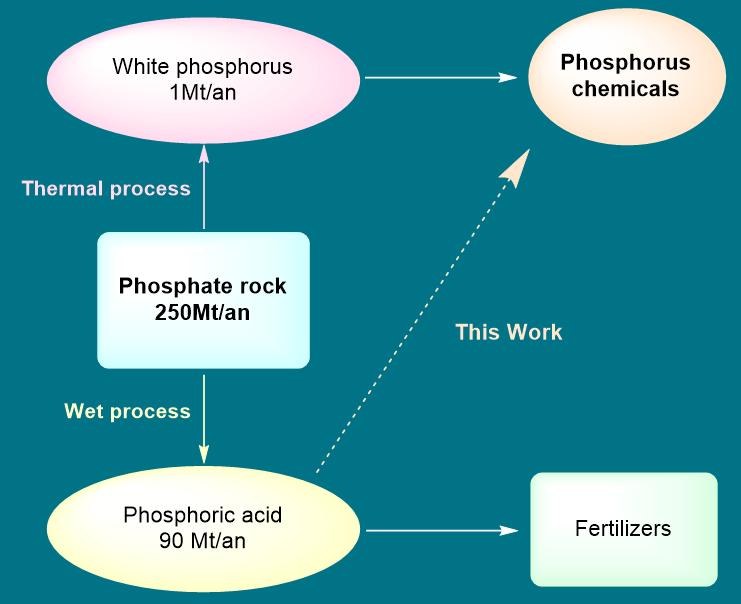 |


